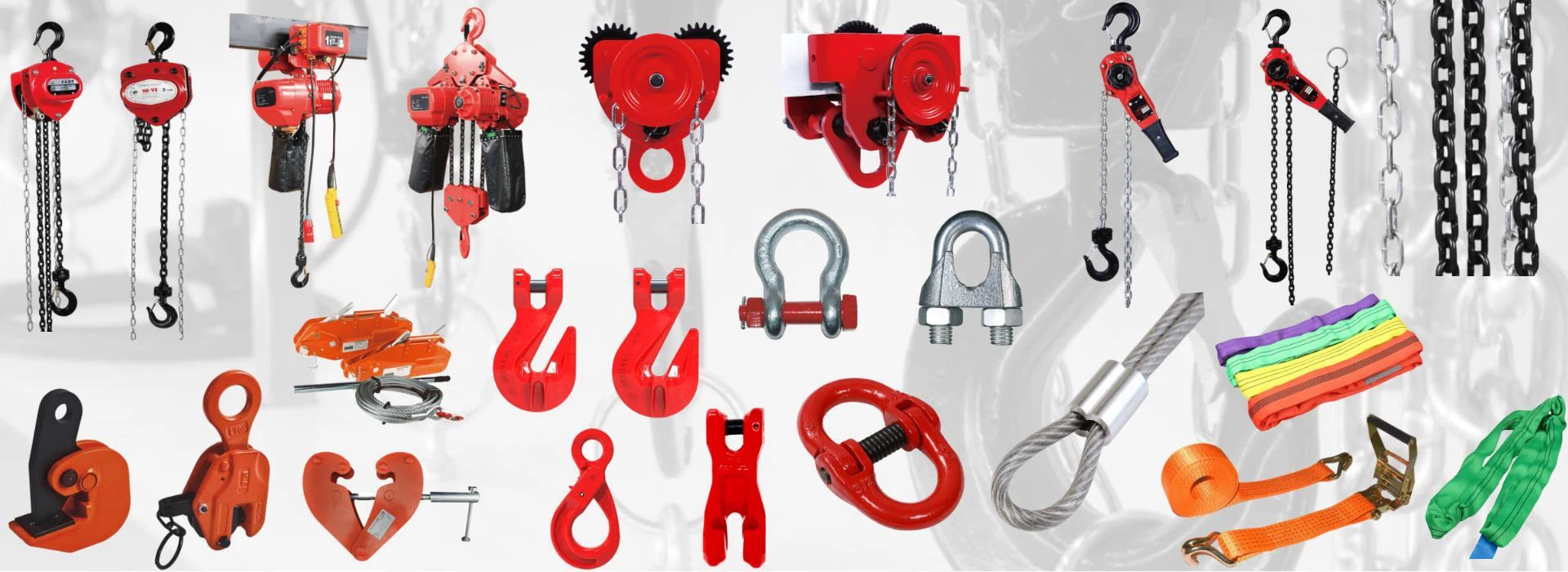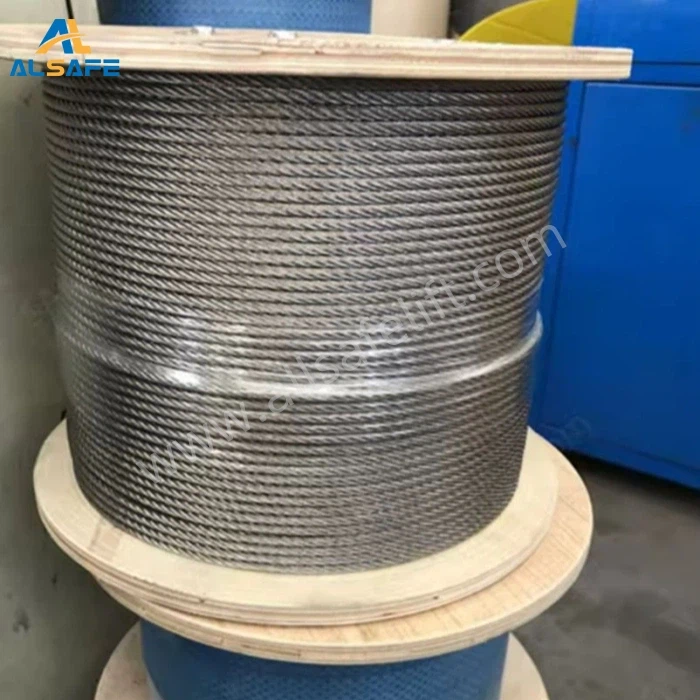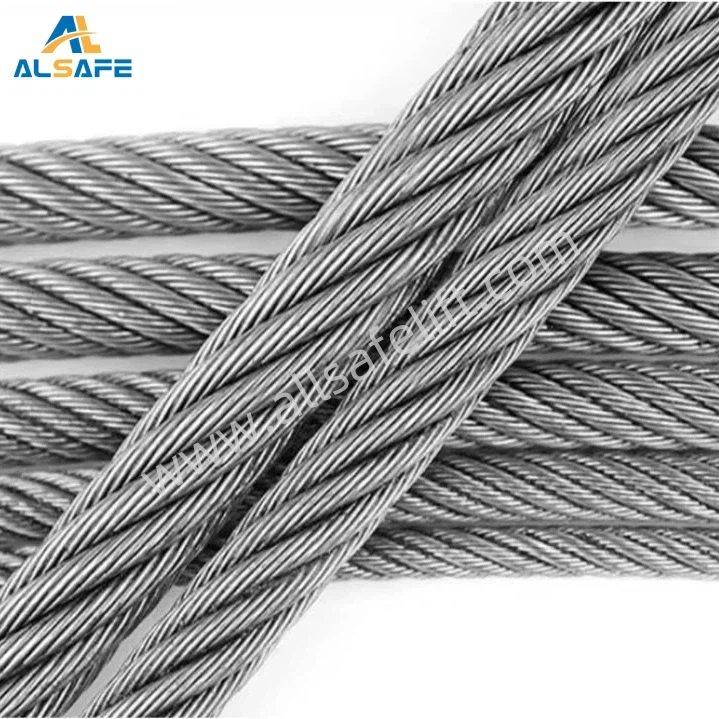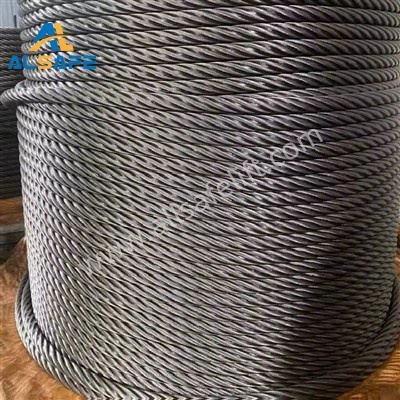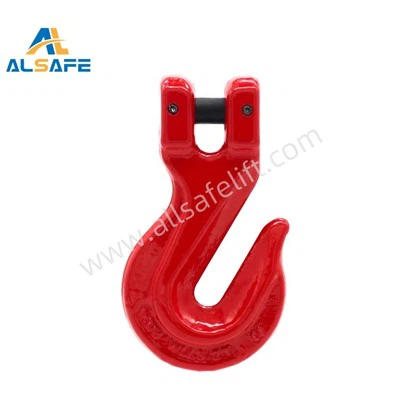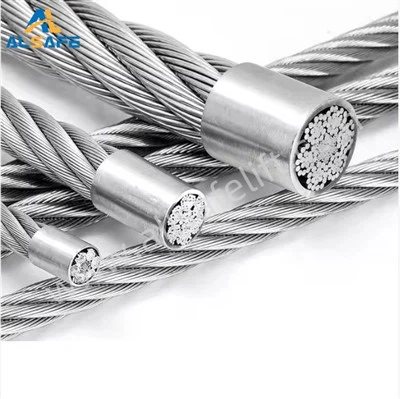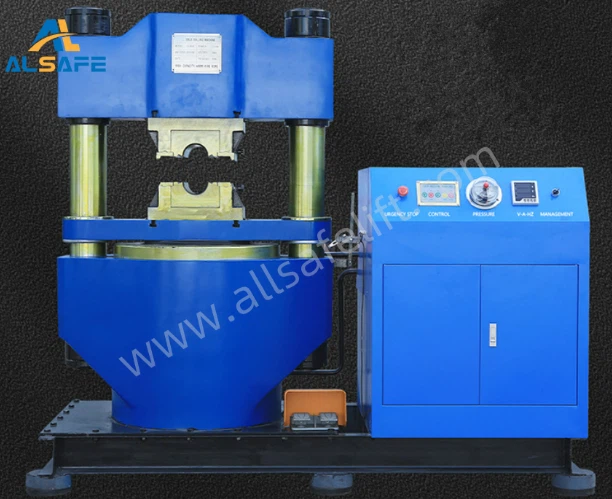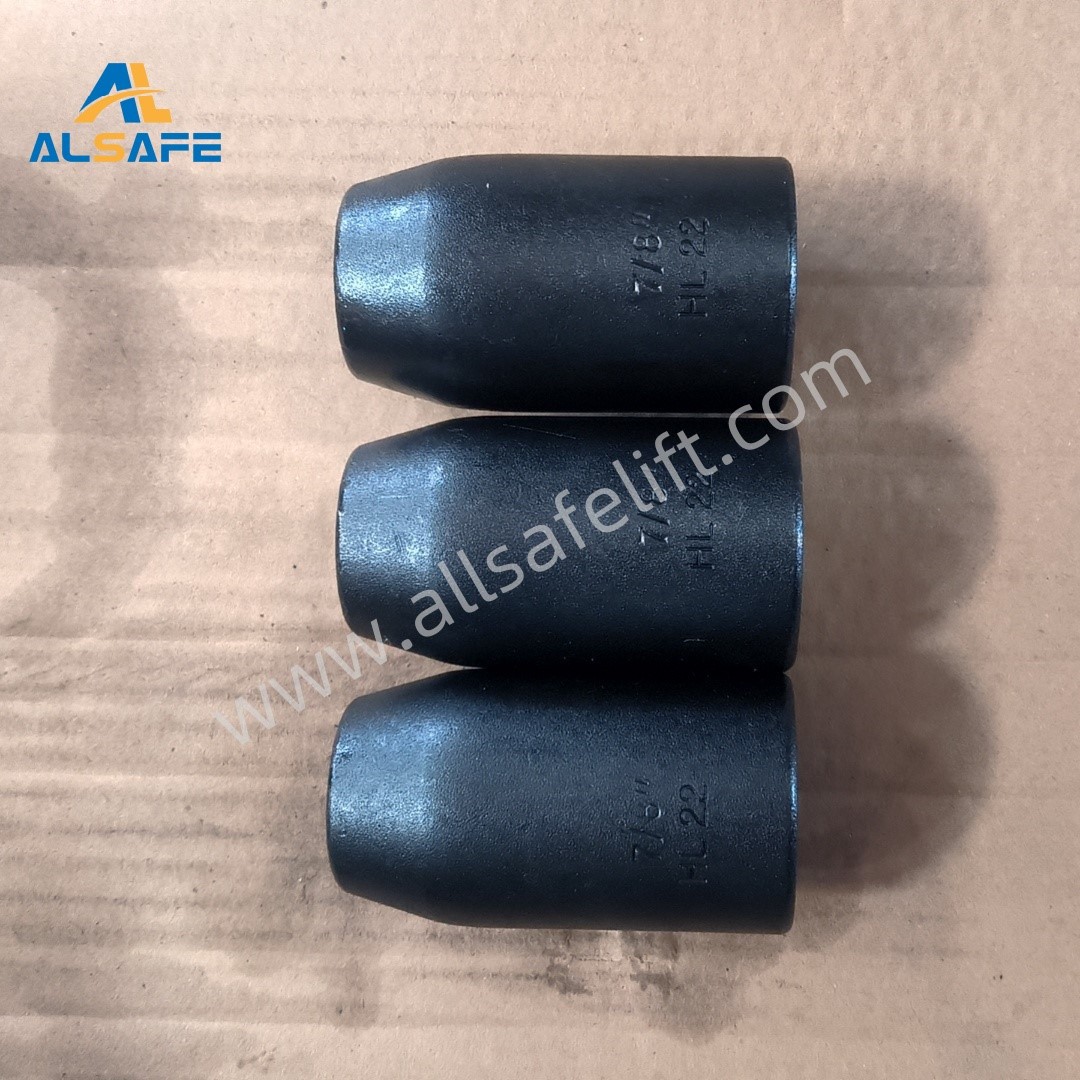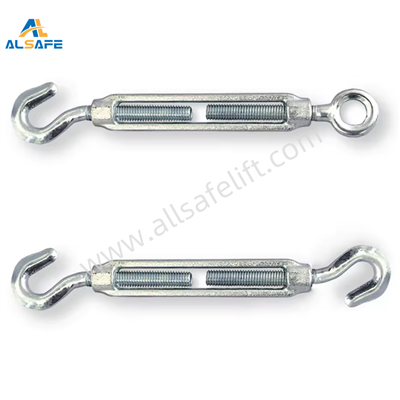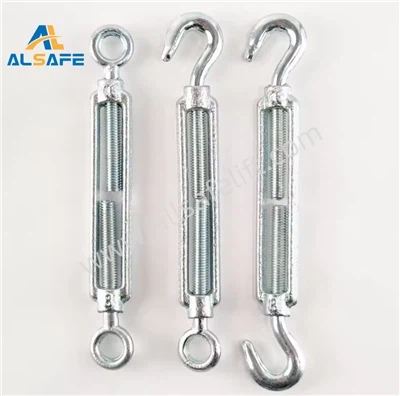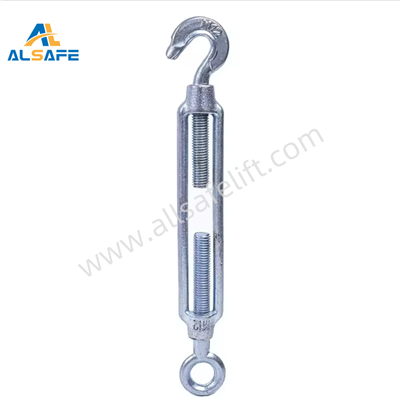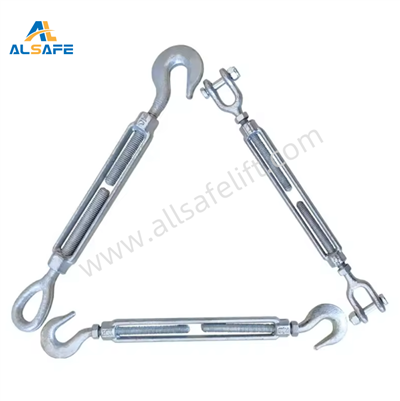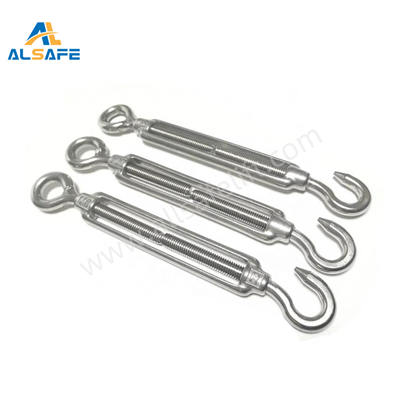Turnbuckle
Known for high quality product and excellent , timely service . AllSafe Group is a leader in the fields of lifting equipment and riggings.
With a wide range of premium products , hardware riggings and material handing equipment , Our top priority is to deliver high quality products while ensuring complete customer satisfaction.
Tested and certified, our products are genuine and meet international standards and requirements. Our wide range of material-handling equipment and hardware riggings include chain block , lever block , electric hoist , plain/geared trolley , G80 chains , webbing sling , ratchet tie down , steel wire rope , shackles, turnbuckles, wire rope clips , among others.
Why Choose Us?
High Quality
Prefessional QC team with 20 Years' experience. Tested and certified, our products are genuine and meet international standards and requirements.
Complete Range of Products
Our wide range of material-handling equipment and hardware riggings include chain block , lever block , electric hoist , plain/geared trolley , G80 chains , webbing sling , ratchet tie down , steel wire rope , shackles, turnbuckles, wire rope clips , among others.
Quality Control
Grade 80 & Grade 100 Materials used for all lifting equipment & riggings. With a wide range of premium products, hardware riggings and material handing equipment, Our top priority is to deliver high quality products while ensuring complete customer satisfaction.
A turnbuckle, stretching screw or bottlescrew is a device for adjusting the tension or length of ropes, cables, tie rods, and other tensioning systems. It normally consists of two threaded eye bolts, one screwed into each end of a small metal frame, one with a conventional right-hand thread and the other with a left-hand thread.
The tension can be adjusted by rotating the frame, which causes both eye bolts to be screwed in or out simultaneously, without twisting the eye bolts or attached cables.
Parts of a Turnbuckle
Body: The metal frame in the center of the device that joins the two threaded end fittings. The body itself is turned to adjust tension by extending and retracting the end fittings.
The body may be one of two types: Closed or open. An open body turnbuckle is the more traditional type where the threads are visible through the body frame. Closed body turnbuckles—also known as pipe bodies—encase the threads in a closed frame to create a slimmer profile that fits in tighter spaces.
Nut: Also referred to as a jam nut, the nut can be placed on the threads of the end fittings and tightened against the turnbuckle body to help prevent the device from loosening or unthreading.
End fittings: These are the two connection points that screw into the opposite ends of the turnbuckle body. One end fitting is right-hand threaded while the other is left-hand threaded. This allows you to turn the body to adjust tension after installation without moving the end fittings.
There are three main types of end fittings that can be used together in any combination on either end of the turnbuckle:
● Hook end: A hook end fitting is used to create temporary connections because they are easy to quickly connect and disconnect. They should never be used in connections where tension could unexpectedly release.
● Jaw end: A jaw end fitting consists of a jaw and bolt secured together by a nut or a pin. These are used to connect to components that cannot be opened, such as an eye bolt.
● Eye end: An eye end fitting is a closed loop that can be connected to a shackle or quick link.
Thread diameter: This is the diameter measurement of the threaded portion of the end fittings. The greater the thread diameter is, the greater the load-bearing capacity of the turnbuckle and vice versa.
Take-up length: This is the total length that the end fittings can screw into and out of the body to "take up" tension. Take-up length can be measured in terms of "opened" or "closed" end fittings: The end fittings are either fully extended or fully retracted.
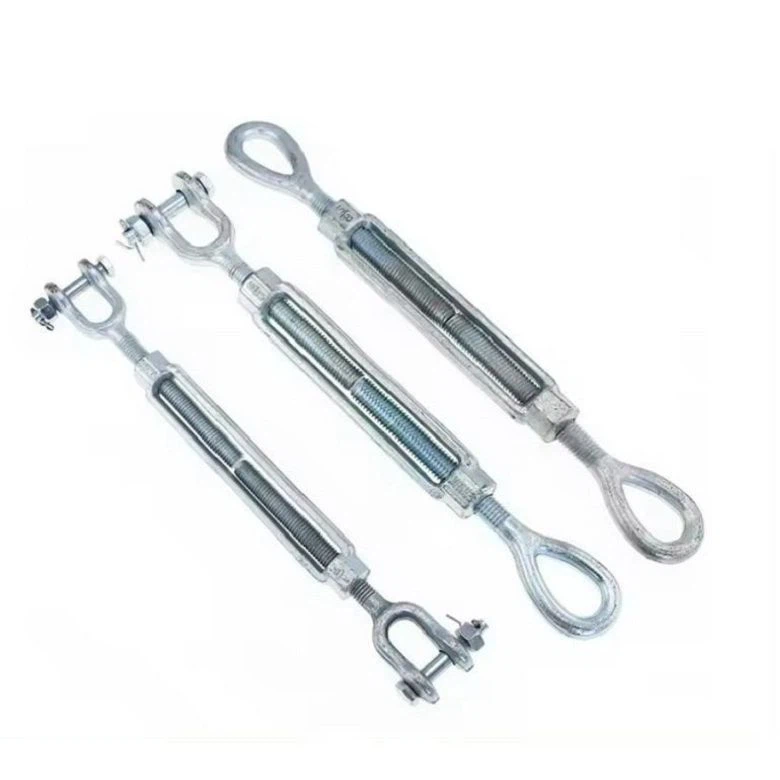
Because the threads of the holes on the body go in opposite directions, the inserts also move in opposite directions so that:
● When the end fittings are screwed in and the body is rotated in one direction, the inserts are both pushed out of the body, extending to relieve tension on whatever section of rope or cable they're attached to.
● If the body is turned in the opposite direction, the inserts are pulled toward the center, retracting to increase tension.
The amount of tension applied depends on how far apart those two nuts are when they are attached (known as "closed") and what type of material makes up your particular turnbuckle.
Most turnbuckles are forged or cast from stainless steel or low carbon steel. They are machined to product specifications and then quenched, tempered, plated with zinc, or hot-galvanized.
Products with self-colored finishes and yellow chromate coatings are also available.
Stainless steel turnbuckles are designed for applications that have high strength-to-weight ratios and minimum turnbuckle diameters. They combine very high tensile strengths with ductility and corrosion resistance.
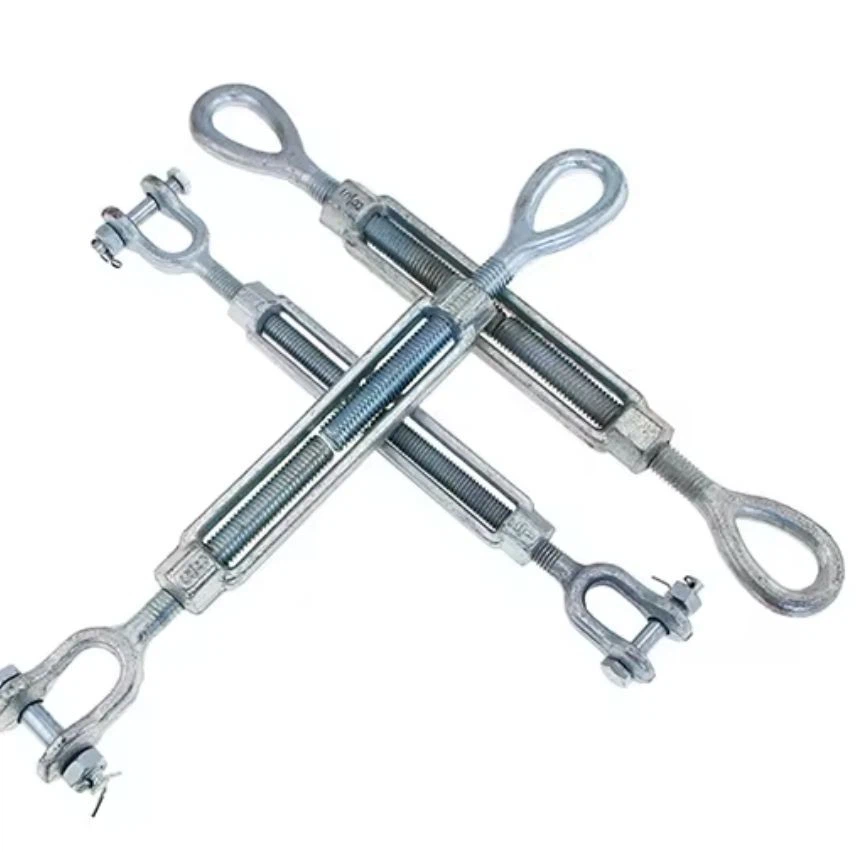
Turnbuckle Types
There are several types of turnbuckles. The primary difference is the end-fitting combinations. The end fittings do not necessarily need to match.
The typical end fitting styles you will see offered by most industrial hardware suppliers are:
● Eye and eye turnbuckles: Two rounded loops on each end
● Hook and eye turnbuckles: One loop and one open hook
● Hook and hook turnbuckles: Two hooks on either end
● Jaw and eye turnbuckles: One closed loop and one u-shaped opening with a pin and screw closure
● Jaw and jaw turnbuckles: Two u-shaped openings with pin and screw closures
These different fittings are used to connect varying types of industrial hardware for rigging applications. For instance, an eye end fitting may be used to connect to a loop end of an industrial wire rope or cable. A hook would be optimal for an application that needs to be easily unattached, while a jaw end fitting creates a more secure, permanent connection.
Turnbuckles may also be made of different materials, depending on the application. Stainless steel turnbuckles are the most heavy-duty, as this metal is naturally corrosion resistant. Stainless turnbuckles would be recommended for applications exposed to the elements, such as for marine rigging.
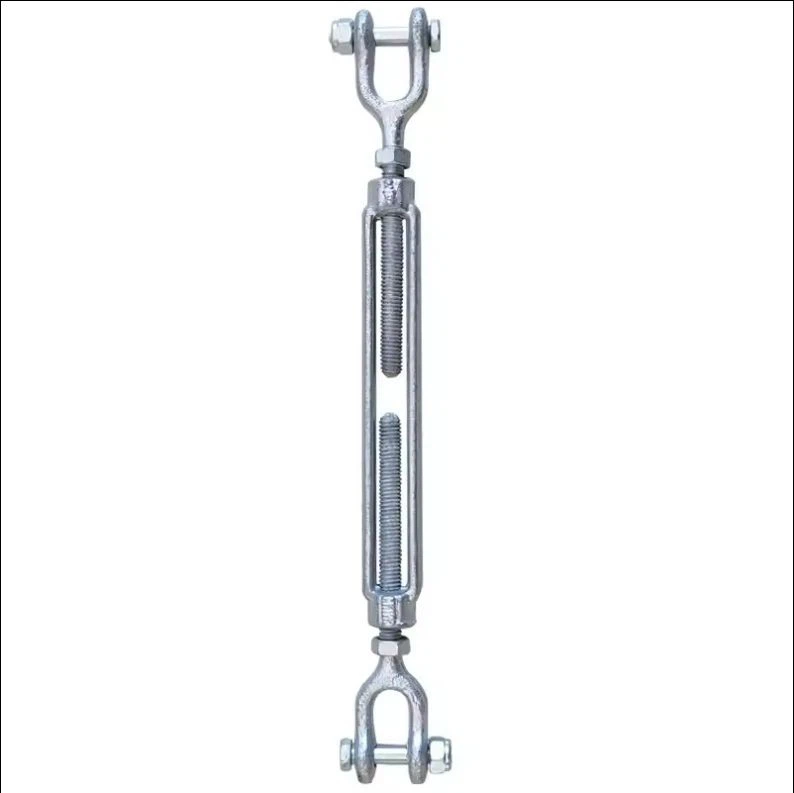
Installation of Turnbuckles
Proper installation of any equipment is vital for safety and effectiveness, and turnbuckles are no exception. Installing a turnbuckle is simple with the following steps:
1. Unscrew all the end fittings from the main body until it extends to the full length.
2. Connect your desired fitting on both ends.
3. Rotate the turnbuckles until you reach the desired tension.
4. Tighten the nuts, if any, down to the body.
As you perform the installation, be sure to keep the working load limit in mind.
How to Adjust a Turnbuckle
A turnbuckle is a threaded device that connects various parts of your boat's rigging system, allowing for tension adjustments. Adjusting turnbuckles is not just about fine-tuning – it's preventative maintenance that prolongs the life of your rig.
Step 1: Cotter pin removal
First things first, it's time to remove the cotter pins. These small pins secure the turnbuckles in place. Gently unbend the cotter pin's legs, one at a time, until they're nearly aligned. Gradually bring them together, taking care not to twist them. The right pair of pliers, preferably with a small nose, will come in handy here. A slight wiggle should align the pins, making them easy to remove. Set these pins aside safely.
Step 2: Adjusting the turnbuckle
The terminal has flats for gripping with a wrench. Opt for a vice grip-type wrench for a secure hold. Keep the wire steady as you turn the turnbuckle – this prevents wire damage.
Knowing the direction of the threads is crucial. Typically, the upper thread is right-hand, while the lower thread is left-hand. Turn the turnbuckle in the appropriate direction – lefty-loosy for the upper thread. Count your turns. Keep an eye on the thread slopes – the right side of the right-hand thread is higher. After loosening, apply marine-grade grease generously for longevity and smoother adjustments.
Step 3: Retightening and maintenance
Reverse the turnbuckle to tighten it back up. Counting your turns to reset the tension level. Always secure the wire to prevent any twisting. For turnbuckles with stem ball fittings, make sure they're secured to avoid rotation. When unsure, avoid backing up the turnbuckle entirely – stick to minor adjustments. Apply fresh grease and tighten every two years for a healthy rig.
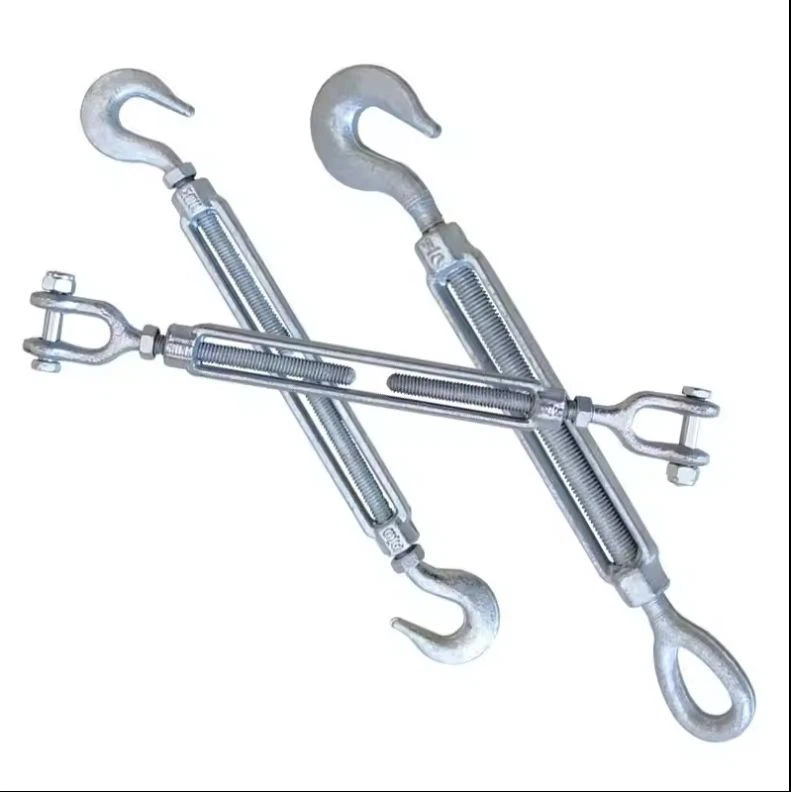
Your capacity would be limited by the safe working load of the turnbuckle, but it would be limited to that regardless of the grade of steel used for the bracing rod. Let's assume you are using mild steel, A307/A36 rods. The minimum yield strength of that material is 36,000 psi. Using a 1″-8 thread size as an example with a tensile stress area (the area at minor diameter of the threads) of 0.606 sq in, the math works out like this:
36,000psi yield x 0.606 sq in = 21,816lbs
If we move to F1554-55, that number is a bit higher:
55,000psi yield x 0.606 sq in = 33,330lbs.
The safe working load of a normal 1-8 x 6″ turnbuckle is listed as 10,000 lbs, well below both of the above numbers. This is due to the substantial safety factor used on turnbuckles and clevises of 5:1. Anchor rods and cross brace rods do not normally have such a large safety factor built in, so in effect, comparing turnbuckles to the brace rods is not an apples to apples comparison.
What Is A Turnbuckle Used For
The benefits of a Turnbuckle don't just stop there. They have a wide array of other uses, such as adjusting and reducing slack in various tensioning assemblies. Most commonly, they act as tensioning devices that allow truckers or construction workers to adjust cable lines found in both mechanical and applications. Here are some specific examples of how they can be used:
● They're often used on watercraft to secure cables running from the vessel to the shoreline.
● Turnbuckles are also used to tension several lines simultaneously.
● They're used on Theater Sets to help adjust the length of a cable, like curtain motors.
● On a ship, Turnbuckles can be used to rig sails, spars and other loads that require some additional tensioning.
● In the carpentry, plumbing and electrical industries they're used to connect parts.
● For residential constructions, they connect the length of space between two posts.
● Also, they're used to support swings and other recreational equipment at a public playground.
● During the construction of a suspension bridge, they're used to adjust the cables or ropes.
● Turnbuckles have even been used in sports, such as boxing and wrestling rings.
At the end of the day, Turnbuckles are a crucial component in aiding with the adjustment of cables or ropes in any workplace setting.
FAQ
Q: What is turnbuckle?
The tension can be adjusted by rotating the frame, which causes both eye bolts to be screwed in or out simultaneously, without twisting the eye bolts or attached cables.
Q: What is a turnbuckle used for?
Q: What is the purpose of a turnbuckle in aircraft?
Q: What is another name for a turnbuckle?
Q: What are the advantages of turnbuckles?
Q: Why are turnbuckles so useful?
A turnbuckle may be used to adjust the tension in an assembly in extremely fine increments. At the same time, each of the inserts is just less than half the length of the turnbuckle's body – allowing for an adjustment of almost the full length of the body.
The threading on turnbuckles allows them to be tightened and loosened without the use of tools, making them popular for quick adjustments in the field.
Q: How are turnbuckles used?
Q: Are turnbuckles strong?
Q: What are some safety considerations when using turnbuckles?
Q: How to measure a turnbuckle?
Q: What is a turnbuckle on a ship?
Q: What are the rules for turnbuckles?
Q: What is the turnbuckle mechanism?
Q: What is a turnbuckle used for lifting?
Q: What is the importance of turnbuckle?
Q: What are the main functions of turnbuckles?
Q: What are the different types of turnbuckles?
Q: Where are turnbuckles commonly used?
Q: How do I install a turnbuckle?
Q: How should I maintain turnbuckles?

